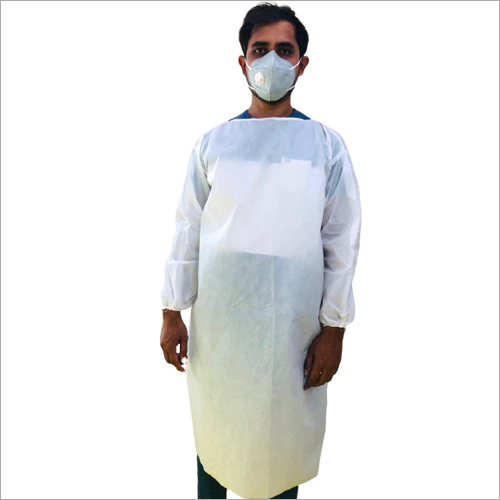electrotech.wb@gmail.com 08047017681
- Send SMS Send Email
A Complete Guide To Non-Woven Surgical Gowns
Posted by Admin on June, 18, 2022

Gowns from Non Woven Surgical Gown Exporters are a type of personalized protective equipment (PPE) that is commonly used in the health care profession. They are the second most often used type of PPE in medical services, as per the National Center for Biotechnology Information (NCBI). These clothes, often known as hospital gowns, are worn to protect the user and limit illness or infection transmission. Their secondary role is to prevent hazardous bacteria from coming into touch with patients.
The levels of protection provided by different gowns vary, with each kind authorized for a certain location, generally based on the danger of exposure to body fluids. While each sort of gown is made from various materials, they all serve the same purpose. They shield the user from microbes and infectious fluids, limiting disease transmission. Gowns serve as a barrier between healthcare workers and infections or viruses.
Throughout the COVID-19 epidemic, most individuals were hyper-aware of PPE, as they were advised to wear safety masks, utilize respirators, and disinfect their hands regularly. PPE, on the other hand, is essential in hospitals and operating rooms all year. Protective robes keep medical staff and patients safe while also helping to keep health care facilities clean. Whether there is a pandemic or not, hospitals must always be well provisioned with excellent PPE.
Non-surgical Gowns:
Non-surgical gowns should not be worn during intrusive operations such as surgery or in environments where there is a medium to high risk of contamination. They are classified as Class I medical equipment and do not require premarket approval. Their principal function is to protect the user against fluid or germ transmission in low-risk medical contexts, such as a regular physical checkup.
These robes may resemble those used for surgery in appearance. They protect the vital zones and must fulfill the highest liquid barrier performance criteria in their classification.
Except for the gown's ties, cuffs, and hems, all other sections are important protective zones. The seams should be protected by the same amount of liquid barrier as the gown.
Benefits:
Disposable non-woven isolation gowns provide good filtering of germs and dust, a low surgical contamination rate, quick disinfection and sterilization, and easy composite with other substances as compared to typical pure cotton is woven medical textile isolation gowns.
As a disposable product, disposable non-woven isolation gowns are not only easy to use, safe, and hygienic, but they also effectively avert bacterial infection and iatrogenic cross-infection. Professional non-woven textiles have relatively high requirements, therefore when purchasing an isolation gown; you should get it from a reputable manufacturer to assure the product's high quality and effectiveness.
One of the most significant disadvantages of PPE is that it does not provide effective protection if worn appropriately. As part of an integrated infection-control plan, health care personnel must appropriately wear a medical gown. Workers must be educated to correctly wear disposable medical gowns.
Medical gowns are accessible at the back so that health professionals may swiftly and easily put them on with a low danger of contamination. Patient gowns are designed with a back opening to provide physicians, nurses, and surgeon’s easy access to certain portions of a patient's body.
This entry was posted on June, 18, 2022 at 13 : 15 pm and is filed under Surgical Gown. You can follow any responses to this entry through the RSS 2.0 feed. You can leave a response from your own site.
Search
Category
Recent Posts

